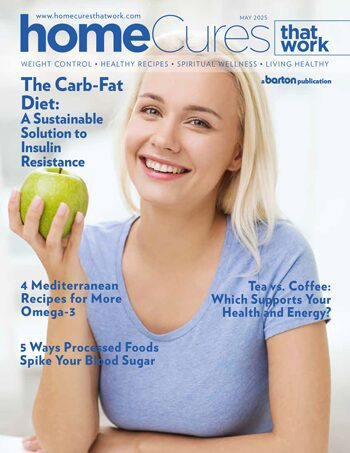Thermaculture for Mental Resilience and Stress Tolerance
Discover how activating your body’s thermoregulation response can elevate stress tolerance in your daily life.
The ambiance is thick with steam, creating an immersive atmosphere within the sauna. As the heat surrounds me, I notice the sensations—almost 10 minutes in, the warmth becomes intense, and my skin is covered in sweat. Attempting to concentrate on my breath, I inhale and exhale rhythmically, guided by our sauna leader. She encourages us to use our breath to signal safety to our bodies, assuring us that the discomfort is temporary but vital for building resilience. As the first sauna round concludes, we step out into the frigid air on the rooftop patio, exposed to 17°F. The contrast is stark, and the biting wind challenges our bodies. I focus on my breath again, inhaling through the nose and exhaling fully, combating the cold’s immediate impact.
This rhythmic dance of hot and cold exposure repeats, each cycle lasting nearly 10 minutes, forming my Thermaculture experience at The Hewing Hotel in Minneapolis, Minn. The aftermath is a relaxed fatigue, a clear mind—an outcome of engaging two nervous system houses and their respective neurochemical responses: the “fight-or-flight” of the sympathetic nervous system and the “rest-and-digest” of the parasympathetic nervous system. It’s a natural high, driven by the release of endorphins, leaving me contemplating when I can partake in this practice again.
The History of Thermic Bathing
The practice of hot and cold exposure has transcended cultures for over a millennium, manifesting in Native American sweat lodges, Scandinavian saunas, and ancient Roman bathhouses. Rooted in detoxification, purification, and community, this tradition is approached through heat exposure, primarily saunas, and cold exposure methods, such as ice baths.
Saunas, originating from Finland, involve a wooden room with a heater and stones, creating steam for a velvety bath experience. Cold exposure, traced back to the ancient Greeks and Egyptians, ranges from cold showers to cryotherapy, offering benefits like mood stabilization, improved metabolism, and enhanced recovery.
Research indicates that both hot and cold exposure trigger dopamine release, providing a natural peak experience. In Finland and Denmark, winter swimming’s mood-boosting effects align with these findings. The resurgence of temperature-based therapies in the U.S. is evident, with in-home sauna equipment sales having doubled yearly since 2020, reflecting a renewed focus on
self-care.
The Importance of Practicing for Stress
In Thermaculture, discomfort may arise minutes into a sauna session or immediately in cold environments. The key is to sit with the discomfort, resist the urge to exit and practice deep breathing. By inhaling through the nose and exhaling through the mouth, activating the parasympathetic response, practitioners can stimulate the vagus nerve, fostering rest-and-digest responses. This intentional discomfort practice is crucial for managing stress and trauma, providing tools to calm breathing and stabilize the nervous system during challenging situations.
Paige LaBreche, certified in trauma-informed yoga practices, emphasizes the significance of contrasting hot and cold therapy in daily stress management. The practice instills confidence in regulating breath and calming the nervous system, a valuable resource during down moments or anxiety-inducing situations. LaBreche notes the parallels between intense life moments and Thermaculture discomfort, emphasizes the practice’s role in reminding individuals that discomfort is temporary.
How to Practice Hot and Cold Exposure
Consulting with a doctor is advisable, especially for individuals at risk of heart disease, as extreme heat and cold impact the heart rate and circulatory system. Guided experiences, available through sauna societies, can offer initial exposure and education for independent practice. Life Time members can access saunas, steam suites, and cold-plunge tubs for a comprehensive experience.
For independent practice, selecting hot and cold options accessible to you is key. Saunas, cold showers, or natural cold exposure opportunities in winter are potential choices. Setting an intention to find comfort beyond your edge and practicing mindfulness during sessions enhances the experience. Listening to your body and relying on personal feelings guide the duration of each hot or cold cycle.
Tips for Hot Exposure
1. Focus on your breath, activating the parasympathetic response.
2. Bring a water bottle for hydration between hot and cold rounds.
3. Practice mindfulness, allowing thoughts to come and go without attachment.
4. Use aromatherapy if possible, incorporating essential oils for each round.
Tips for Cold Exposure
1. Choose your preferred method, such as cold-plunge pools, cold showers, or winter wind exposure.
2. Focus on exhaling to counteract the shock to your body.
3. Avoid tensing, practicing a body scan to relax muscles.
4. Rely on your agency, seeking peace rather than victory, and gradually extending your practice.
Thermaculture stands as an incredible practice, offering a toolkit for navigating life’s challenges. By intentionally seeking discomfort and practicing controlled responses, individuals can enhance their stress tolerance, reinforcing the belief that they can overcome hardships.



















